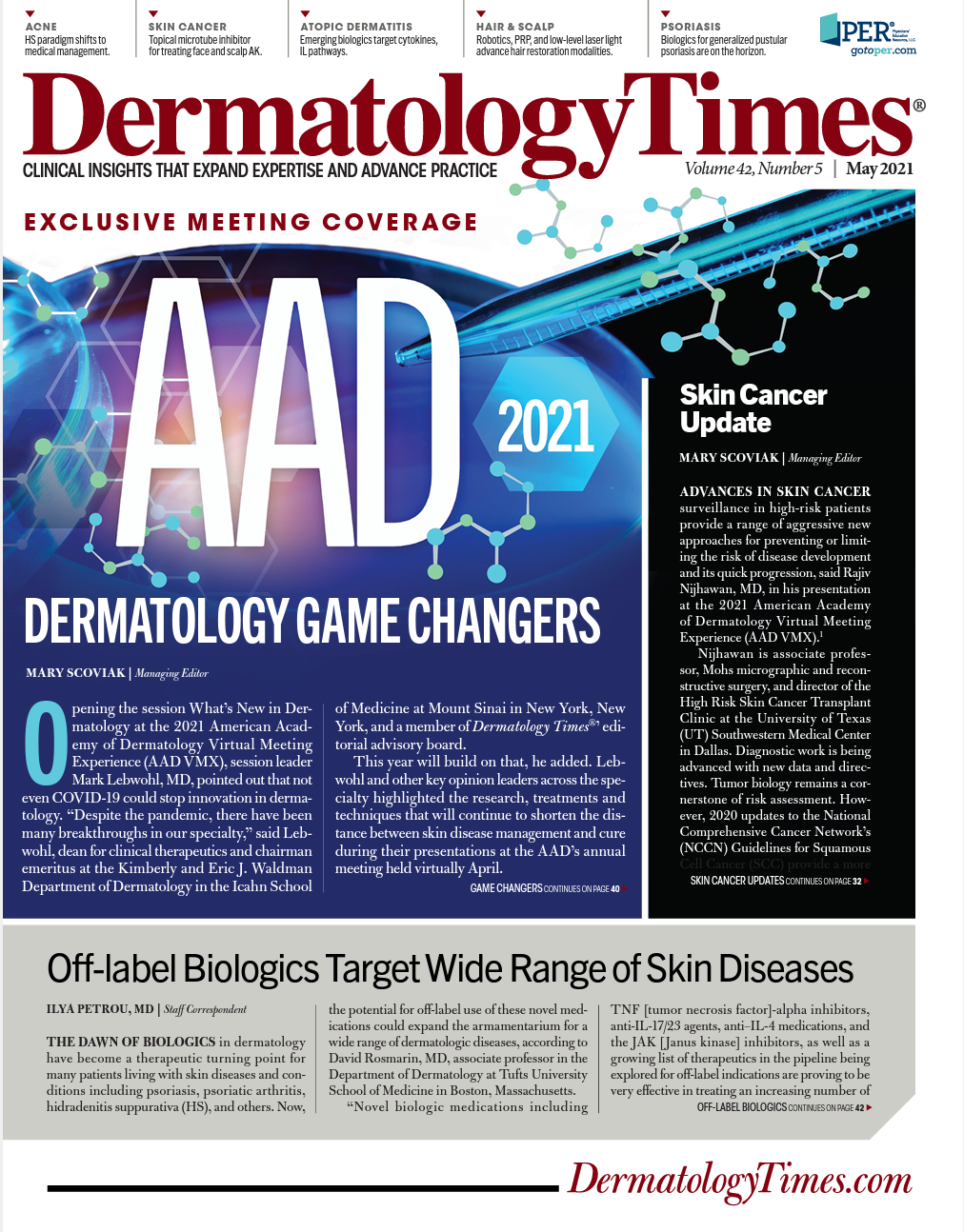- Case-Based Roundtable
- General Dermatology
- Eczema
- Chronic Hand Eczema
- Alopecia
- Aesthetics
- Vitiligo
- COVID-19
- Actinic Keratosis
- Precision Medicine and Biologics
- Rare Disease
- Wound Care
- Rosacea
- Psoriasis
- Psoriatic Arthritis
- Atopic Dermatitis
- Melasma
- NP and PA
- Skin Cancer
- Hidradenitis Suppurativa
- Drug Watch
- Pigmentary Disorders
- Acne
- Pediatric Dermatology
- Practice Management
- Prurigo Nodularis
- Buy-and-Bill
Publication
Article
Dermatology Times
Debunking Sunscreen Controversies
Author(s):
Sunscreen is a necessary preventive tool. However, there are concerns about UV agent absorption, environmental impact, and possible correlations with frontal fibrosing alopecia (FFA). Here is a look at whether those worries are justified by research.
Sunscreen is a useful, ubiquitous product. As a daily staple in patients’ lives, it might not be the first product that would be expected to cause controversy. However, research over the last few years has raised safety concerns on a number of fronts, including systemic absorption of UV agents, possible environmental damage, and links to frontal fibrosing alopecia (FFA).
In a presentation at the 17th Annual Skin of Color Society Scientific Symposium,1 Steven Wang, MD, head of dermatology section and director of dermatologic surgery and dermatology at Memorial Sloan Kettering Cancer Center in Basking Ridge, New Jersey, outlined three current controversies and delved into the research behind them.
FDA studies2 show that six active ingredients in sunscreen are absorbed into the bloodstream, even after just one day of use. In 2019, the agency issued a proposed rule3 that would divide UV agents into one of three categories: safe and effective, not safe and effective, and those for which more safety information is needed.
Only two UV agents, titanium dioxide and zinc oxide (which are physical, as opposed to chemical, sunscreens) are considered safe and effective. Aminobenzoic acid (PABA) and trolamine salicylate are not considered safe and effective. The remaining 12 active ingredients, including the six in the aforementioned study, need further safety data.
Wang pointed out that the data from these studies reflect laboratory conditions, not real-life use, as the investigators applied the products at the maximum recommended level and reapplied four times a day, which Wang said would not typically happen in normal use.
He also said titanium dioxide and zinc oxide don’t provide a full toolkit of options. “Titanium dioxide and zinc oxide are safe and effective, but they are still difficult to use in very high SPF and are too white to blend into Fitzpatrick skin types IV to VI.”
He stated the same reservation about environmental concerns surrounding oxybenzone and its toxicity to coral reefs. “Controversy mainly started from the laboratory study where the investigator placed oxybenzone in a sort of a tank, and in really high concentration levels, about 2.2 parts per billion to 228 parts per million….[At] that concentration…you can actually kill the coral reef and deform the DNA in the larval stage of the coral reef. Just to put things in perspective, the oxybenzone concentration in the Hawaiian ocean in the coral reef was about 0.8 to 19 parts per billion. In the Virgin Islands, this is about 75 parts per trillion and 1.5 parts per billion.”
He said he feels that oxybenzone has been unfairly a target of criticism when global warming is doing most of the damage to coral reefs.
The last controversy Wang addressed is the connection between sunscreen and FFA. “The only thing the research shows is that people with FFA tend to use a lot of sunscreen,” he said. He added that concerns about free radicals causing FFA don’t hold true anymore, as the titanium dioxide and zinc oxide in most modern sunscreens has an aluminum shell to prevent the release of free radicals.
He also noted that the studies on which these findings were based were questionnaires, and that recall bias and temporal ambiguity affect findings from such research, as does the number of inactive ingredients in sunscreen.
In a study published in 20204, Wang and his coauthors declared the evidence for a link between sunscreen use and FFA insufficient.
Disclosure:
Wang reported no relevant or financial interests.
References:
1. Wang S. Controversies in sunscreen. Presented at: 17th Annual Skin of Color Society Scientific Symposium; March 13, 2021; virtual.
2. Matta MK, Florian J, Zusterzeel R, et al. Effect of sunscreen application on plasma concentration of sunscreen active ingredients: a randomized clinical Trial. JAMA. 2020;323(3):256-267. doi:10.1001/jama.2019.20747
3. FDA advances new proposed regulation to make sure that sunscreens are safe and effective. News release. Food and Drug Administration. February 21, 2019. Accessed April 14, 2021. https://www.fda.gov/news-events/press-announcements/fda-advances-new-proposed-regulation-make-sure-sunscreens-are-safe-and-effective.
4. Robinson G, McMichael A, Wang SQ, Lim HW. Sunscreen and frontal fibrosing alopecia: a review. J Am Acad Dermatol. 2020;82(3):723-728. doi:10.1016/j.jaad.2019.09.085






